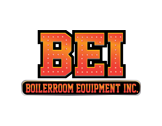

Engineers & Manufacturers of the Heatsponge Economizer
1-866-666-8977
Typical Boiler Economizer Specification.
The following sample specification can be utilized for the procurement of a boiler economizer. For a specification custom tailored to you application go the On-line Performance Calculator and the software will automatically generate your specification for you.
1. BASIS OF DESIGN:
1. The basis of design for the project is a HeatSponge Boiler Economizer as manufactured by Boilerroom Equipment, Inc.
2. SUMMARY:
1. This section shall define the minimum requirements for the selection of a heat recovery boiler economizer
3. GENERAL DESIGN:
1. The economizer shall be manufactured and tested in accordance with Section VIII Division I of the ASME Boiler and
Pressure Vessel Code. The unit shall be code stamped to a minimum of 600 PSIG design pressure.
2. The unit shall consist of a finned tube gas-to-liquid heat exchanger designed to transfer heat from the flue gas into a
liquid inside of the tubes. The pressure vessel within the gas flow stream shall not contain any welded joints or tube-to
header fittings.
3. The unit must feature tube elements that can be individually replaced without the need to perform any welding. The
individual tubes shall be able to be easily removed and replaced. Method of tube connection shall be to each
manufacturers standard however a compression fitting-type connection is preferred.
4. The tube bundle shall consist of a rectangular square pitch arrangement to provide for maximum cleanability and
maintenance. Coiled, triangular or staggered pitch arrangements shall not be considered.
5. The unit shall be designed so a bypass damper is not required for the normal operation of the unit. This is defined as any
economizer configuration that requires a damper to act as a gas flow diverter to forced the flue gas over the economizer
tubes. Should a bypass damper be required it shall be completely external to the economizer to physically isolate and
prevent flue gas from passing over the tube bank.
6. The economizer must be designed to be 100% drainable in both horizontal and vertical configuration to avoid the
potential of trapped liquid pockets that could be subject to failure from freezing.
7. The unit shall be supplied with integral inlet and outlet flue gas connections to the stack. The entire assembly shall be a
factory-insulated one-piece design to allow for easiest installation. Units that do not provide a fully factory-insulated
assembly shall not be considered. Units that require seperate flue gas transitions shall not be considered.
8. For all vertical gas flow up installations the lower gas inlet transition must be fitted with a water-catch system to collect
all moisture from condensing, rain, or from a tube failure and provide a means to drain it from the economizer without it
entering the boiler.
9. The economizer shall include at least one (1) removable access panel to provide full access to the inside of the
economizer for routine maintenance, inspection, and repair.
10. The header manifolds shall be threaded or flanged at each end and can be 2 1/2" 3" 4" or 6".
11. The economizer supplier shall include a Safety Relief valve suitable for the application in their base scope of supply. SRV
supplier to be manufacturers standard.
12. Materials Of Construction:
1. Tubes: For applications that allow the use of carbon steel tubes such as deaerated boiler feedwater the tube
material shall be either a SA-178-A, SA-214, or other manufacturers standard. For applications that require the use
of stainless steel tubes such as process water and non-deaerated boiler feedwater the tube material a manufacturers standard for the application such as an 304, 316, or other grade of stainless steel.
2. Fins: The fins shall be either high performance aluminum or manufactured of the same material-type as the tubes. Carbon steel tubes may have carbon
steel fins and stainless steel tubes must have stainless steel fins. The manufacturer may offer their recommendation. Fin-to-tube attachement shall be by manufacturers standard. Fin density shall be five fins per inch for gas fired boilers with a #2 oil standby and 4 fins per inch for #2 oil only fired boilers.
3. Inner Casing: Any unit that is not expected to go into condensing shall utilize carbon steel inner casing. Stainless
steel shall be utilized if condensing is expected.
4. Insulation: The unitre economizer shall be insulated with a minimum of 2" mineral wool insulation. This includes
inlet and outlet gas adapter areas.
4. PERFORMANCE
1. The design parameters of the unit shall be as follows:
1. Boiler Maximum Capacity:
2. Primary Fuel Fired:
3. Standby Fuel Fired (if applicable):
4. Boiler FGR Rate (if applicable):
5. Boiler Excess Air Rate:
6. Design Water Flow Rate:
7. Water Inlet Temperature:
8. Water Outlet Temperature:
9. Maximum Water Side Pressure Drop:
10. Design Gas Flow Rate:
11. Flue Gas Inlet Temperature:
12. Flue Gas Outlet Temperature:
13. Maximum Gas Side Pressure Drop:
14. Unit BTU Duty:
Boilerroom Equipment, Inc. division of Thermal Energy International Copyright 2021. All rights reserved.

Boilerroom Equipment, Inc.
11 Rich Hill Road
Cheswick, PA 15024
1.866.666.8977

